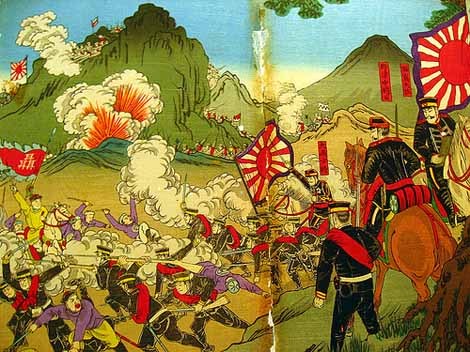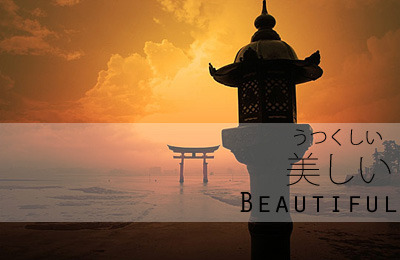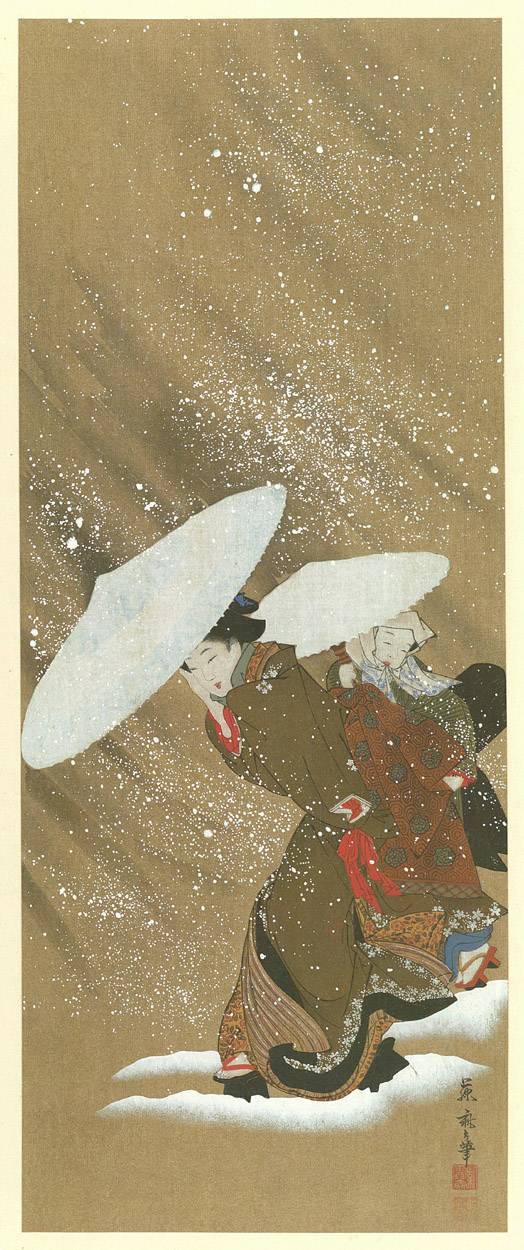Photo

62 notes
·
View notes
Text
Shichi-Go-San 七-五-三
Now I bet most of you have heard of the famous ‘Coming of Age Day’ (Seijin no Hi・成人の日) which celebrates youths transition into adulthood at the tender age of 20. But here is a celebration which I have noticed most people outside of Japan are not so familiar with, 7-5-3 (Shichi-Go-San・七-五-三) which happens every year on November 15.

7-5-3 (Shichi-Go-San・七-五-三) is day which both celebrates and prays for the growth of healthy children. The significance of the ages 7, 5 and 3 are that they are the celebrated milestone years for children in Japan. Much like how many eastern countries celebrate certain ages, i.e. 3, 10, 13 and 16.
The reasons for these particular ages, dates back to the “medieval” times of samurai and aristocrats families (web-japan.org), these ages saw the following:
3 years old: Both boys and girls of 3 years stopped having their hair shaven and were permitted to grow their hair out.
5 years old: Boys of 5 years could don a ‘hakama’ in public for the first time.
7 years old: Girl could begin using an ‘obi’ sash to tie their kimonos instead of the cords at the age of 7.
By the time of the Edo period (1603-1868) the ‘common’ folk of Japan were also celebrating these customs and began to visit shrines with prayers and offering for their children’s healthy growth. This custom/celebration is not a part of a holiday thus people celebrating this day can often be seen at the shrine the weekend before or after November 15th (ginkoya.com).

#Japan#matsuri#children#celebration#shichi-go-san#7-5-3#November 15#Japanese#culture#history#日本#にほんご#まつり#はかま#おび#きもの#七-五-三#子供#十一月
9 notes
·
View notes
Video
youtube
Although present day Japan is an interesting topic, fully of different sub-cultures and beliefs; one mustn't forget the fasinating roots to which the county was founded and oporated.
6 notes
·
View notes
Video
youtube
Number 1 today (brand new) on the Oricon charts is Arashi with Endless Game.
Members:
Satoshi Ono
Sho Sakurai
Masaki Aiba
Kazunari Ninomiya
Jun Matsumoto
Years Active:
1999-Present
#Arashi#Endless Game#Music#Oricon Charts#Oricon#Sho#Ono#Aiba#Nino#Jun#Johnny's Entertainment#Japan#Japanese
1 note
·
View note
Link
Learn Japanese language with free to use and fun online games. Games to learn Japanese phrases, vocabulary, numbers and grammar. Language games include audio to learn pronunciation Japanese.
For all of you begining your Japanese Language learning adventure, I thought this site would be perfect for you.
As you know, sometimes studying from a book can get boring and it is good to mix things up and make it fun.
So here is a web-site with a variety of games to choose from. Test your current knowladge or aquire it new.
Have fun!
楽しんでよ。
121 notes
·
View notes
Photo

Suki na hito wo wasure youto suru nante koto wa, shiranai hito wo oboe youto suru no tonaji da.
8 notes
·
View notes
Photo

In Japan, the 2nd Monday of the New Year is marked as 'Coming of Age Day' or Seijin no Hi - 成人の日.
It is held for those who have matured to the age of 20 in the past year and commemorate their transgretion into adult hood.
This Coming of Age Day became an icey wonderland with the streets filling with snow.
For futher information about 2013's Comeing of Age Day check tokyofashion's article.
#Coming of Age Day#Japan#Japanese#Seijin no Hi#成人の日#日本#にほんご#日本語#日本人#にっぽん#雪#yuki#snow#Nihon#Nippon#Nihongo
13 notes
·
View notes
Video
dailymotion
Number 2 today on the oricon charts is Tegomass with Neko Cudoku.
Tegomass is a sub group of the band NEWS - ft. Keiichiro Koyama, Shigeaki Kato, Tegoshi Yuya and Masuda Takahisa.
The subgroup consists of both Tegoshi and Masuda, this is also where the name TEGO-mass is dirived from.
13 notes
·
View notes
Photo

The First Sino Japanese War - 1894-1895
A war fought between Japan and China, their goals you ask? It was to decide which of the nations would have control over Korea.
In 1885 an agreement was signed by the two which allowed both nations to station troops in the land, the "Li-Ito Convention", but 9 years later the peoples of Korea revolted. Both Japanese and Chinese troops were sent to "rectify" the situations. The job was done, and their claim on the land was once again cemented but when it was time for the troops to return to their posts, the Japanese refused to withdraw their soldiers from the then Chinese controlled Korea.
For more information about the First Sino War - click here
#Japan#Japanese#China#Chinese#Korea#Korean#War#Battle#Invade#The First Sino War#1894-1895#Li-Ito Convention#日本#中国#韓国#朝鮮
3 notes
·
View notes
Photo

Source- Tokyo Times
Old meets new: Young Japanese attend the annual Tori no ichi festival(酉の市-Rooster Day Fair).
3 notes
·
View notes
Photo

40 notes
·
View notes
Video
youtube
Current number one in the Oricon charts for it's first week "Face to Face" by KAT-TUN.
Members:
Kamenashi Kazuya
Tanaka Koki
Tatsuya Ueda
Yuichi Nakamura
Former Member(s):
Akanishi Jin
Active years:
2001-Present (12 years)
#Japan#Japanese#KAT-TUN#Music#Face to Face#PV#MV#Kamenashi#Koki#Yuichi#Ueda#johnny's entertainment#Number one#1#Oricon Charts#J-Pop#Popular
2 notes
·
View notes
Text
Jizo / Ojizosama お地蔵さま

“n – a Buddist guardian of children and travellers or statues of him. Usually in the form of じぞうさま. These statues are found in temples and all over Japan at roadside or on paths.” – Oxford Japanese Minidictoinary, © Jonathan Bunt 2000, 2001, pg 103.

The Jizo / Ojizousama is one of Japans most loved Japanese divinities, as he is affiliated with protection and the saving of “lost” souls. More commonly the souls of children who have passed before ‘their time’. It is said that Ojizousama helps babies, still borns and children’s souls to pass onto the afterlife, saving them from an eternity of piling stones on the banks of the Sanzu River (a river which is believed to have to be crossed in order to reach the afterlife). In doing so he hides the young souls in his cloak, protecting them from demons and carrying them across.
It is quite common to find these statues in cemeteries, temples and on roadsides/paths and sometimes accompanied with little stones, pebbles and/or coins. These little offerings are given as thanks for saving/protecting someone or in hopes that this divinity with aid someone lost.
Ojizousama is also believed to be the protector of travellers, or dousojin, and Firefighters.

#ojizousama#jizo#Japan#Japanese#buddhism#temple#divinity#protection#children#statue#guard#afterlife#help#parents#hope#にほんじん#日本人#にほんご#日本語#にほん#日本#おじぞうさま#お地蔵さま#地蔵#じぞう#三途の川#どうそじん#道祖神
151 notes
·
View notes
Photo




Negative Adjectives:
__________
Disgusting: Mazui / まずい / 不味い - (i-adj) also ‘unpleasant’; refers to taste, appearance and situation.
Stupid: Baka / ばか・バカ / 馬鹿 - (na-adj) also ‘idiot’, ‘jerk’, ‘folly’, ‘dunce’, etc. Used as an insult (vulgar language) or when describing something idiotic.
Ugly: Minikui / みにくし / 醜い - (i-adj) also ‘unattractive’.
Annoying: Wazurawashii / わずらわしい / 煩わしい - (i-adj) also ‘troublesome’.
#日本#にほん#にほんご#日本語#Japanese#Japan#Adjectives#Flash cards#Negative#Disgusting#Stupid#Ugly#Annoying#ばか#まずい#醜い#煩わしい
152 notes
·
View notes
Photo




Positive Adjectives:
Beautiful: Utsukushii / うつくしい / 美しい - (i-adj) refers to a person or place. Subarashii () used when refering to the day or weather.
Cool: Kakkoii / かっこいい / - (i-adj) also ‘good-looking’, ‘handsom’; male form of ‘kawaii’.
Cute: Kawaii / かわいい / 可愛い - (i-adj) also ‘adorable’; very effeminate term.
Dear: Itoshii / いとしい / 愛しい - (i-adj) also ‘lovely’, ‘beloved’, etc.
#Japanese#にほん#にほんご#日本#日本語#Adjectives#Positve#Cute#Beautiful#Cool#Dear#Beloved#かわいい#かっこいい#愛しい#美しい#Japan
277 notes
·
View notes
Photo

Utamaro Kitagawa - Two fine ladies walking through the snow.
Print.
27 notes
·
View notes
